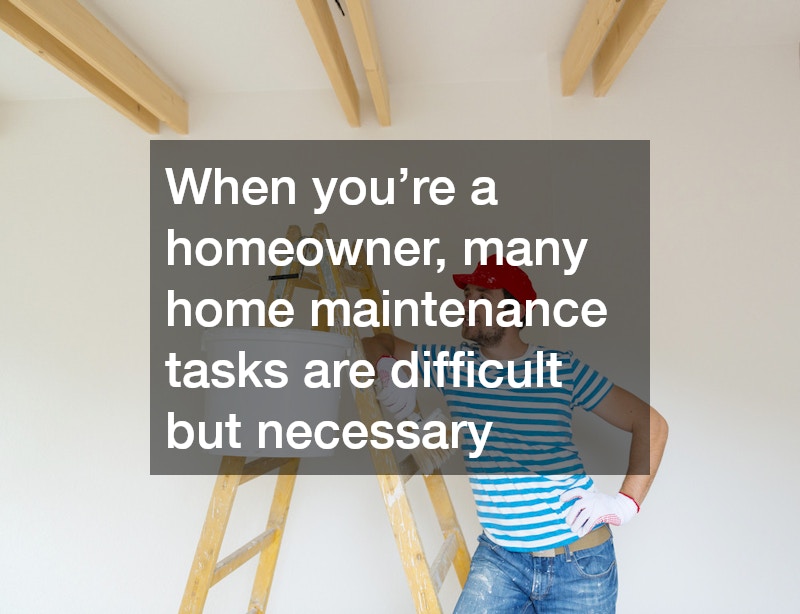
The Basics
There are over 115 million homes in the United States and most of them are single-family dwellings, also commonly known as houses, according to the United States Census Bureau. They are located in rural areas, suburbs, and even large cities. While this may be common knowledge, many are not aware of what goes into basic home construction, such as pouring concrete footings, slabs, or foundation, running plumbing and electrical lines, or the process of framing, siding, and roofing. Understanding basic home construction will allow you to decide what parts of the building process you can do yourself and what you will need to hire a professional contractor for.
A very select few can complete all the steps involved in construction themselves when building their own home, but if you are looking into all the steps that go into building a new home, you will likely be able to act as your own general contractor throughout the building. In the necessary order, a general contractor hires the subcontractors throughout the building process. Hiring your subcontractors as you need them and doing certain work yourself are the two best ways to save money when building a home. If you wish to act as your own general contractor, you will need to understand the order and organization involved in basic home construction.
The biggest benefit of acting as your own general contractor during basic home construction is the amount of money you can save. Most general contractors charge around 15 to 25 percent of the total cost of building your home. For example, if the total price of building your home is 200,000 dollars, you will save at least 30,000 dollars if you do it yourself. Although the biggest drawback of being your own general contractor is that you might get in over your head. Experienced general contractors will have established relationships with experienced subcontractors, have the necessary supplies, understand the permit process, and know how to coordinate the build. In many ways, good general contractors earn the fees they charge.
Preparing the Site
To prepare the site for basic home construction, you will want to clear any trees, brush, trees, rocks, or other debris. This step will often involve another labor crew that clears the building site down to the ground level and a minimum of 25 feet around the planned perimeter of your home. The labor crew will usually arrive on-site with a bulldozer or a backhoe to clear the site and level it if necessary. Also during this step, a surveyor can help you update the boundary lines and prepare the site for construction while avoiding any legal disputes.

This is also the best time to make changes to your building site’s topography. This may be necessary to ensure that clean water flows properly on your land. This task will require a subcontractor with earth-moving equipment. This is also the time in which you want to contact your energy company and ask for temporary utilities. You will then need to hire an electrician to connect the temporary electrical panel.
At this point, you will want to also bring in a few portable toilets for the construction workers. Without a sewer connection or septic tank pumping service, this will be essential.
It All Starts With The Foundation
Homes are almost always built on a foundation. This can be a crawl space, basement, or a concrete slab.
Crawl Space
For a home built on a crawl space, the site preparation crew digs a series of holes and trenches. Then, concrete is poured into these holes and trenches which will eventually connect the foundation wall and the ground. Think of it as a massive concrete beam on which the home will rest. However, a crawl space is generally made from cinder blocks with a brick facing.
A crawl space has numerous advantages over basements and slabs. A crawl space elevates the home off the ground. This is especially beneficial in areas that are prone to termites or damp. A crawl space is also considerably less expensive than a basement. Also, plumbing and ductwork can be run in the crawl space, which allows for easier installation and maintenance
Basement
For a home built on a basement, the site preparation crew digs a square hole about eight feet deep. The outer walls of the basement are formed by cinder block or concrete and at the bottom of the hole is a slab of concrete. Most basements are poured into three stages: the beams, walls, and then the slab inside. This helps keep the basement waterproof.
Concrete Slab
A concrete slab is known as the easiest foundation to build since it is just a flat concrete slab that is poured directly into the ground. It requires minimal preparation and labor to install. One drawback to the concrete slab is that it only works well in warmer climates and on level ground. If the ground freezes, the slab can shift and lead to cold floors.
Pouring Concrete
The job of pouring concrete footings and the foundation is usually done by foundation specialists and excavation contractors. This is an entirely separate crew you will need to hire. The price of pouring concrete footings and foundation comprises a huge part of the entire cost of basic home construction, so you will want to get the job done right. The contractor team you hire to pour concrete will need to be able to:
- Dig trenches for frost footings
- Inspect the dimensions of footing trenches
- Pour concrete for footings
- Construct footing drains
- Build vertical foundation walls resting on the footings with concrete cinder blocks or poured concrete
- Waterproof the foundation up to the finished grade level
Running Plumbing and Electrical Lines
If your concrete contractors are laying a slab foundation, you will need to hire a team of electricians and plumbers at this point to rough in the plumbing and electrical lines before the concrete slab is poured. The term rough in refers to the point in which the initial electrical wiring and plumbing installations are done before the walls and ceilings are closed up. Electricians will run electrical lines through the concrete slab with metal conduits and a plumber will lay down pipes that will eventually be covered with concrete.

Pouring Concrete Slabs
When it comes to hiring a subcontractor who will pour the concrete slab, they will need to be able to:
- Install slab foam board insulation
- Install a gravel base over the foam board, which forms the base for the concrete
- Install a plastic vapor barrier
- Lay and position wire mesh reinforcement slightly above grade
- Pour a concrete slab, usually already mixed and delivered in a truck
- Pour concrete for a basement or garage, if needed
Framing, Siding, and Roofing
Now that all the concrete and foundation work has been completed, it is time to hire subcontractors known as framing carpenters whose specialty is installing the lumber framework for the wall, floors, and ceilings as well as sheathing, siding, and roof installation. This work can be completed quickly in the span of one to two weeks.
At this point, there are a few steps of basic home construction that you might be able to do yourself to help save money, such as hanging wallboard or laying the floor sheathing over the joists. However, many builders prefer this work to be done by skilled framing carpenters. You will want to hire a crew of carpentry contractors who can:
- Order framing materials based on your building plans This will include nails, wood, house wrap, felt, and adhesives
- Frame the basic shell of the home. This includes walls, floors, ceilings, and roof skeleton as well as the openings for doors, windows, or skylights. This does not include the roof surface or siding
- Install the actual doors, including residential garage doors, as well as any windows or skylights. Although this job is often completed by the carpentry crew, this is a task you can likely do yourself
- Install the finished siding surface
- After this work is completed by the crew of carpentry contractors, you can hire some roofing contractors to install the shingles and roof flashings.
Plumbing and Electrical Installation
The next step of basic home construction is interior work, which will require masons, plumbers, electricians, and HVAC contractors. If applicable, a mason will build the chimney in your home. Over the base of concrete laid by the previous concrete contractor, the mason will lay stone veneer or brick.
At this point, the plumbing, electrical, and HVAC contractors will finish installing electrical circuits, plumbing pipes, and HVAC system ductwork. After this, their work is almost finished until the walls and ceilings are completely in place. Insulation can now be installed in the attic and walls. This can be done by various contractors, usually carpentry, or can be done yourself.
After this work is finished, an inspection of the electrical and plumbing work needs to be done, most importantly a fire inspection. This, as well as arranging for building permits, is the general contractor’s responsibility. If you are taking on the role of a general contractor, this will fall on you.

Hanging Drywall and Installing Trim
This next step is usually one that many homeowners decide to do themselves, depending on their skill and expertise. If you decide to contract this workout, the carpentry crew will suffice. If you are doing this step yourself, you will need to:
- Hang the drywall, tape the seams, mud with a joint compound, and sand to finish
- Prime all interior ceilings and walls. This is usually done with spraying equipment
- Install all trim moldings. This includes crown moldings and window and door casings
- Hang the cabinetry in the kitchen, bathrooms, or other areas
The Finishing Touches
After the drywall is installed, you can begin painting. This is another task that is often done by the homeowner to save money. Along with painting the walls and ceilings, homeowners often install the countertops in the bathrooms and kitchen themselves. If not, a carpentry, cabinet, or countertop contractor can do the job. In the United States, granite countertops are the most popular choice for the kitchen.
Another finishing touch that needs to be done is the final installation and hook up of the plumbing and electrical fixtures. There are many code and safety issues involved here, so it is not recommended to try this yourself. You can call the plumbing and electrical contractors back for this job.
Flooring Installation
The interior of your home is almost complete. For the flooring installation, you have a choice of what finish flooring surface you want to lay down throughout your home. Your options include hardwood, carpet, ceramic tile, or laminate flooring. This is usually a task for a contractor, though it is a suitable task for a homeowner to do themselves.
After the flooring is installed, it is time to clean up the site. You can save a lot of money by renting a dumpster and doing this yourself. If you are unable or choose not to do this job yourself, you can hire the services of a company that specializes in basic home construction site cleanup.
Exterior Landscaping
After the interior work is finished and the site has been cleaned up, there is some exterior work to be done. You can finish the exterior landscaping on your own or hire a contractor who will design and install a beautiful exterior landscape for you.

Driveway Installation
An asphalt or blacktop driveway is one of the most popular options for those installing a new driveway or replacing an old one. An asphalt driveway that is installed well will act very much like concrete, but at a much cheaper cost. For maximum durability, an asphalt driveway should be sealed every couple of years.
The final step in the basic home construction process is arranging for a final inspection. If you are using a general contractor, you will need to complete a final walkthrough. If you are acting as your own general contractor, you should walk through after each contractor has completed their work.





